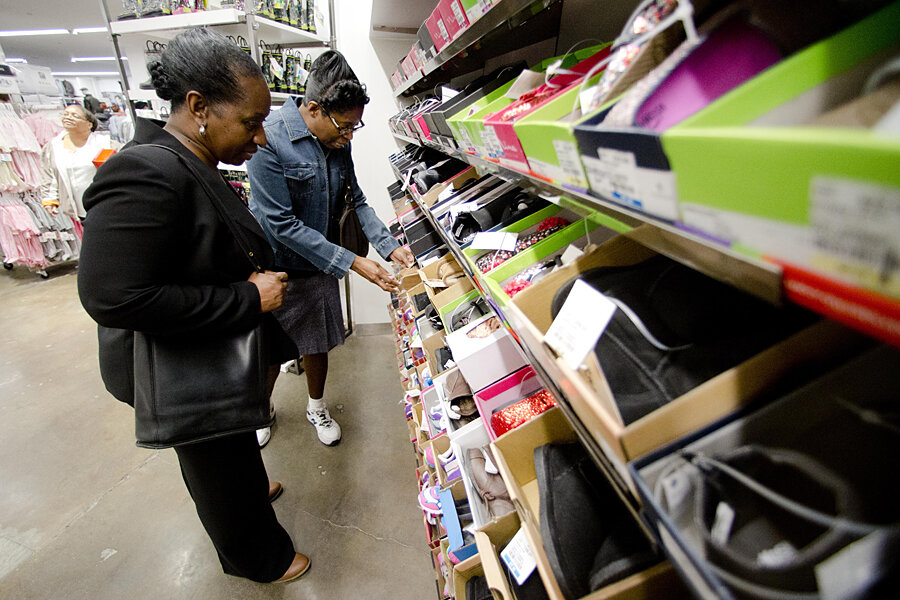US retail sales get a pre-holiday boost in October
Loading...
After a sluggish September, shoppers spent more last month, thanks to falling gas prices and wages that are finally starting to pick up. Now, retailers hope that momentum will continue into the busy holiday shopping season.
Retail sales rose 0.3 percent last month and 4.1 percent from October 2013, according to data released Friday by the Commerce Department. The gain was modest, but better than the 0.2 percent rise analysts expected and a marked improvement from the 0.3 percent drop in September.
The October report provided “ added reassurance that the economy is in better shape than many had hoped a month ago,” Markit economist Chris Williamson writes via e-mail. “A drop in sales in September had stoked fears that US economic growth was slowing at a worryingly steep pace amid the tapering of the Fed’s asset purchases and disappointing global growth. These fears led to widespread financial market jitters.”
Most sales categories rose last month, with the exception of electronics (down 1.6 percent) and gasoline, which tumbled 1.5 percent as oil and gas prices dipped to multiyear lows. Last week, the average price for a gallon of gas in the US fell below $3 for the first time in nearly four years. That decline pushed overall retail sales gains lower, but it also freed up more money for discretionary purchases, and consumers took advantage.
Furthermore, wage gains, which have been the gloomy point in monthly jobs reports over the past few months, are starting to pick up speed. The Labor Department’s Employment Cost Index, which measures wages and salaries, posted their largest gain in six years in the third quarter of 2013.
Such tailwinds are nurturing optimism about the holiday shopping season, a crucial time for the retail industry. The National Retail Federation expects sales (excluding autos, gas and restaurants) in November and December to hit $616.9 billion this year, a 4.1 percent increase from last year.
“Though we have only seen consumer income and spending moderately – and erratically – accelerate this year, we believe there is still room for optimism this holiday season,” NRF Chief Economist Jack Kleinhenz said in an October release. “In the grand scheme of things, consumers are in a much better place than they were this time last year, and the extra spending power could very well translate into solid holiday sales growth for retailers.”
Consumers, too, are feeling better about the economy. According to data also released Friday, the University of Michigan’s Consumer Sentiment Index reached a new post-recession high in early November, thanks to falling gas prices and expectations of higher income gains in the coming year. “Futures prices continue to suggest further declines in gasoline prices, which we believe will continue to bolster consumer sentiment and spending over the coming months,” Barclays research economist Jesse Hurwitz wrote in an e-mailed analysis.








